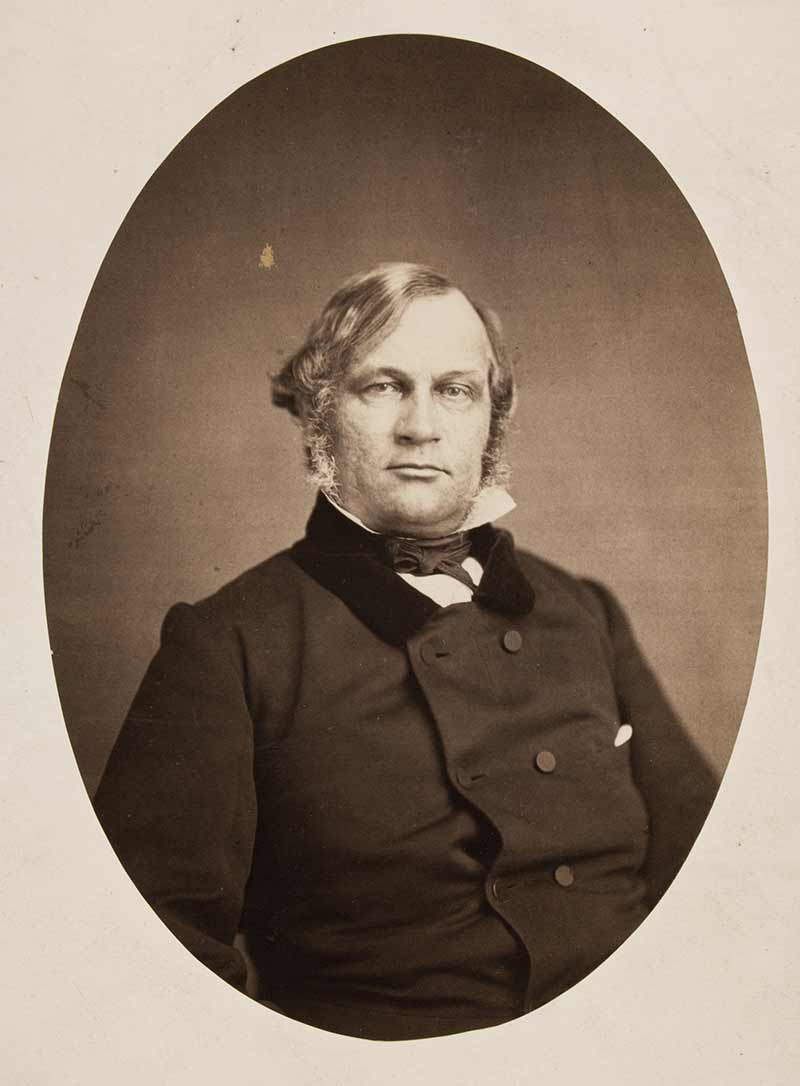Alexander Ramsey
Alexander Ramsey was one of the most influential politicians in Minnesota history. A controversial figure during his lifetime and ever since, Ramsey played a foundational role in creating Minnesota as it exists today.

Alexander Ramsey was born on September 8, 1815, in Hummelstown, Pennsylvania. He joined the Whig Party as a young man, and in 1843 was elected to the US House of Representatives. In 1845, he married Anna Jenks, whose father was also a Congressman from Pennsylvania. The couple later had three children. Their two sons, Alexander and William, died in childhood, but their daughter, Marion, survived into adulthood.
In 1848, Ramsey campaigned in Pennsylvania for Zachary Taylor, the Whig nominee for president, and played a crucial role in Taylor’s win. The new president rewarded Ramsey by appointing him governor of the recently organized Minnesota Territory.
In May of 1849, Ramsey arrived in Minnesota to begin his position as Governor and Superintendent of Indian Affairs. In 1851, Ramsey played a key role in obtaining the signatures of Dakota leaders for the Treaties of Traverse des Sioux and Mendota, which opened twenty-four million acres of land to settler-colonists. For the Dakota, the treaties marked another step in a process that increasingly marginalized them and dismissed them from the land that had been—and remains—their home. Several Dakota alleged intimidation and fraud in the treaty signings, and Ramsey was one of the principal figures accused. Ignoring evidence uncovered in its own investigations, the US Senate exonerated him in 1854.
Ramsey served as mayor of St. Paul in 1855. He ran as a Republican for state governor in 1857 but lost to Democrat Henry Sibley by 240 votes. His second bid was successful, and he served as state governor from 1860 to 1863. As state governor, two events—the Civil War and the US–Dakota War of 1862—defined his administration and shifted his attention to military matters. When the Civil War began in 1861, Ramsey became the first state governor to volunteer troops to the Union. He served as Commander-in-Chief of over 25,000 soldiers serving in Minnesota units.
In August 1862, a different conflict erupted in Minnesota. A group of Dakota, hungry and angered by years of broken promises, began attacking trading posts, farms, and settlements in an attempt to reclaim their homeland. Governor Alexander Ramsey sent in military troops, and offered a bounty to be paid to anyone who killed a Dakota person. In a speech to the Minnesota legislature, Ramsey declared,“The Sioux Indians of Minnesota must be exterminated, or driven forever beyond the borders of the state.”
At the war’s end, more than 300 Dakota were convicted of war crimes in hasty military tribunals. Thirty-eight Dakota men were executed in Mankato, and thousands of Dakota were held in cramped prisons and concentration camps. At Ramsey’s urging, Congress passed laws abrogating all previous treaties with the Dakota and demanding their banishment from the state. All but a few protected groups of Dakota were forcibly removed to reservations hundreds of miles away. Minnesota’s Ho Chunk Indians, though not involved in the war, were also expelled from the state.
In 1863, Ramsey was elected to the US Senate. Over the next 12 years, Ramsey reliably voted along with the wing of the Republican party that were deemed the “Radical Republicans” by their opponents. Serving during Reconstruction, Ramsey participated in a number of historic votes. He voted to impeach President Andrew Johnson, voted to support the Freedmen’s Bureau, voted for the Civil Rights Act of 1866, and voted in favor of the 13th, 14th, and 15th Amendments. Ramsey pushed through a number of bills authorizing Federal funds for projects in Minnesota, including railroad land grants, dams, and other infrastructure.
Ramsey became Secretary of War for President Rutherford B. Hayes in 1879. In 1880, after the unjust court-martial of an African American West Point cadet assaulted by white classmates, he worked with other members of the Hayes administration to investigate and improve the school’s policies.
Ramsey retired from politics in 1886. In addition to his political offices, Ramsey had numerous business interests. Real estate speculation provided most of the family fortune. He also served as a board member of the St. Paul Public Library and twice served as president of the Minnesota Historical Society. He died in St. Paul on April 22, 1903.
